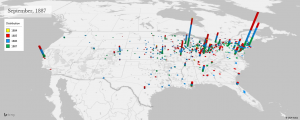Putting Cash Registers on the Map
In 1879, a saloonkeeper in Dayton, Ohio, patented a machine designed to track cash sales in retail environments. Inventor Ja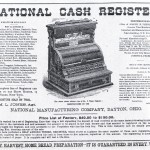 mes Ritty dubbed his device “The Incorruptible Cashier,” a nod to both clerks’ assumed shortcomings and the machine’s claim to be tamper resistant.[1] Three years later in 1882, Ohio coal dealer John H. Patterson ordered two of the saloonkeeper’s machines and put them to work in his store. Shortly thereafter, he gave up the coal business and purchased a controlling interest in Ritty’s former operation. Reorganized in 1884 as the National Cash Register Company (NCR), Patterson’s new firm began building the devices in a one-room factory in Dayton.[2]
mes Ritty dubbed his device “The Incorruptible Cashier,” a nod to both clerks’ assumed shortcomings and the machine’s claim to be tamper resistant.[1] Three years later in 1882, Ohio coal dealer John H. Patterson ordered two of the saloonkeeper’s machines and put them to work in his store. Shortly thereafter, he gave up the coal business and purchased a controlling interest in Ritty’s former operation. Reorganized in 1884 as the National Cash Register Company (NCR), Patterson’s new firm began building the devices in a one-room factory in Dayton.[2]
Sales records from NCR for nearly three thousand machines sold between January 1885 and July 1887 make it possible to map the cash register’s distribution and adoption, changing the way we think about information technology and its innovators. Bound in one comprehensive ledger, these records concern the first wood-cabinet cash registers built by the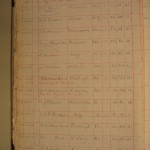 firm that eventually dominated the industry. Captured on two hundred pages are particulars about individual purchasers, their places of business, the kind of registers they purchased, and the terms under which they acquired the machine. Details include customization requests for hand-carved cabinet decorations and inlays, the type of adding mechanism purchasers requested, and the exact keyboard layouts and functions storekeepers dictated to the company and its sales agents, painting a detailed portrait of technology consumers and users, the industry’s innovators and early adopters. I compiled this
firm that eventually dominated the industry. Captured on two hundred pages are particulars about individual purchasers, their places of business, the kind of registers they purchased, and the terms under which they acquired the machine. Details include customization requests for hand-carved cabinet decorations and inlays, the type of adding mechanism purchasers requested, and the exact keyboard layouts and functions storekeepers dictated to the company and its sales agents, painting a detailed portrait of technology consumers and users, the industry’s innovators and early adopters. I compiled this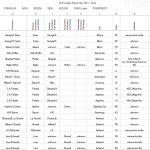 information into an extensive Excel spreadsheet with dozens of variables that allow me to conduct detailed analyses of these early adopters.[3]
information into an extensive Excel spreadsheet with dozens of variables that allow me to conduct detailed analyses of these early adopters.[3]
Between 1885 and 1887, NCR agents sold registers to druggists, hardware merchants, confectioners, dry goods merchants, butchers, and fruit dealers from California to New York, in addition to Canada and England, despite competition from other firms selling similar devices. Total sales grew as more merchants recognized the machine as “an immense improvement over the old method of making marks on a paper or merely cou nting up the cash that happens to be left in the drawer at the close of business,” a claim made in 1885 by one Washington, DC, newspaperman.[4]
nting up the cash that happens to be left in the drawer at the close of business,” a claim made in 1885 by one Washington, DC, newspaperman.[4]
Mapping the cash register’s distribution (and subsequent adoption) reveals a geospatial pattern of technology diffusion often overlooked. Plotting the location of these early sales enables us to see that while there are (perhaps expected) concentrations of buyers in urban areas (New York, Chicago, St. Louis, and Boston in particular), there is significant diffusion across rural areas, even reaching deep into the South and the West. Watch below as the cash register makes its way across the United States:
Historians generally credit the North’s big, urban corporations with initiating the control revolution in business and for passing along information technologies to smaller urban and rural firms. Mapping the cash register’s dissemination, however, reveals a simultaneous city and country adoption, with unlikely pockets of intensity in places like Birmingham, Alabama, and the mining town of Leadville, Colorado. Birmingham’s druggists, saloonkeepers, cigar dealers, dry goods merchants, and grocers were among the city’s first re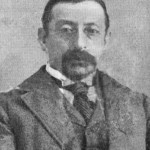 gister buyers, with thirty-three machines installed by 1887, despite the town’s founding only sixteen years earlier. Credit for introducing Birmingham retailers to the cash register in this case goes to saloonkeeper and liquor wholesaler Isaac R. Hochstadter, who bought his first machine in 1885, before embarking on a joint career as an NCR sales agent. Simultaneous adoption of information technology among rural businessmen like Hochstadter and city storekeepers suggests more about their innovativeness and keenness for creating fresh business methods than a desire to follow urban, big business trends. Instead of urbanizing rural life and communities or creating a new “rural modernity,” rural retailers helped construct new national business methods. Visualizing this process enables us to see technology adoption as a large-scale process, whereby thousands worked together to make the register a key component of modern day retailing.[5]
gister buyers, with thirty-three machines installed by 1887, despite the town’s founding only sixteen years earlier. Credit for introducing Birmingham retailers to the cash register in this case goes to saloonkeeper and liquor wholesaler Isaac R. Hochstadter, who bought his first machine in 1885, before embarking on a joint career as an NCR sales agent. Simultaneous adoption of information technology among rural businessmen like Hochstadter and city storekeepers suggests more about their innovativeness and keenness for creating fresh business methods than a desire to follow urban, big business trends. Instead of urbanizing rural life and communities or creating a new “rural modernity,” rural retailers helped construct new national business methods. Visualizing this process enables us to see technology adoption as a large-scale process, whereby thousands worked together to make the register a key component of modern day retailing.[5]
[1] Richard L. Crandall and Sam Robins, The Incorruptible Cashier, Volume 1: The Formation of an Industry, 1876-1890 (New York: Vestal Press, Ltd., 1988), 29.
[2] Samuel Crowther, John H. Patterson: Pioneer in Industrial Welfare (Garden City, NJ: Doubleday, Page & Company, 1923), 58, 82.
[3] Research for this chapter centers on a one-volume ledger detailing 2,948 sales records (1884-1887) from the National Cash Register Company. While the ledger contains accounts from 1884, their numbers are scant and the information incomplete. Currently, only one additional ledger listing a few sales from 1884 is available in the collection. Information in this ledger, however, lacks many of the details from the later ledger, recording only when and to whom the machine was sold and where it shipped to along with incomplete remarks about sales terms and was therefore not used in my analysis. I instead chose to utilize the more complete data from 1885-1887, the first years in which John H. Patterson took control of the organization. Sales records from 1887, however, also are incomplete, ending sometime in July, Agent’s and Commissions Ledger (1884-1887), NCR Archive.
[4] “Cash Always Balanced,” Omaha Daily Bee, October 11, 1887, 8; “Six Questions,” Salt Lake Herald, December, 25, 1887, 24; “The National Cash Register,” Washington (D.C.) Critic, May 8, 1888, 4; Isaac F. Marcosson, Wherever Men Trade: The Romance of the Cash Register (New York: Dodd, Mead and Company, 1945), 39; “Of Great Importance,” Washington (D.C.) Sunday Herald, March 22, 1885, 4.
[5] James R. Beniger, The Control Revolution: Technological and Economic Origins of the Information Society (Cambridge, MA: Harvard University Press, 1986), 1-27; JoAnne Yates, Control Through Communication: The Rise of System in American Management (Baltimore: Johns Hopkins University Press, 1989), esp. chapter 1; William Fielding Ogburn, Social Change with Respect to Culture and Original Nature (New York: B.W. Huebsch, Inc., 1922), 200-13; “Quarterly Banner Rating,” The N.C.R., vol. 5, no. 23 (April 15, 1893), 870; Ronald R. Kline, Consumers in the Country: Technology and Social Change in Rural America (Baltimore: Johns Hopkins University Press, 2000), 7-8.




